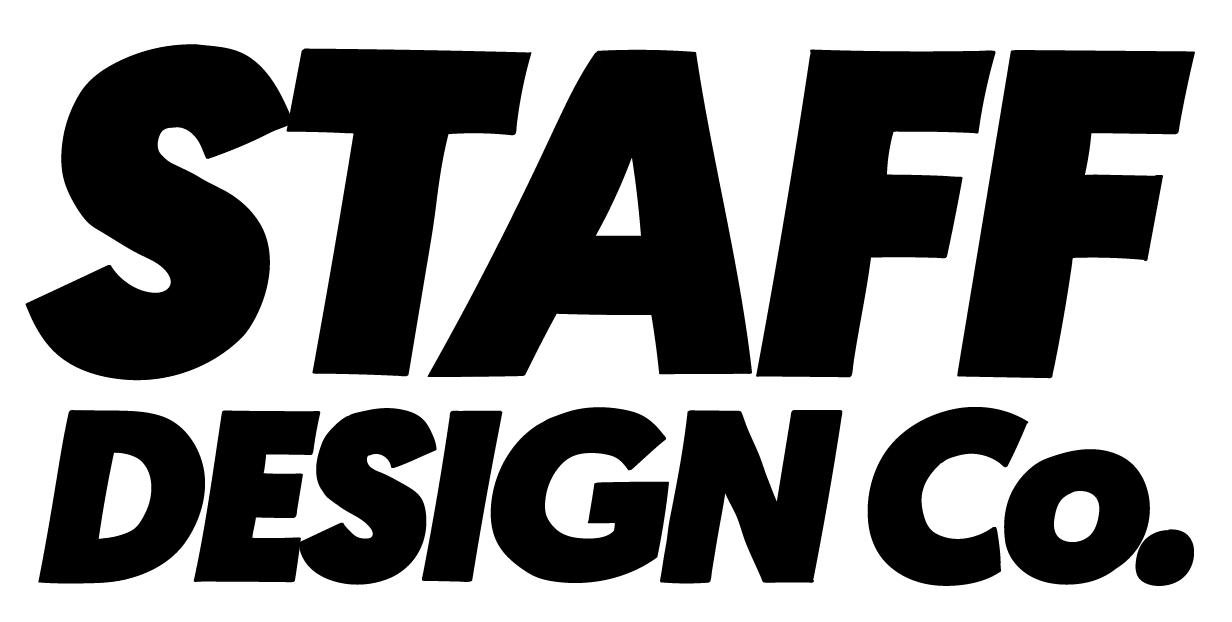Strategy Is Not a Spreadsheet: Why Your Brand Needs a Soul, Not Just a Slide Deck
“The presentation was flawless. The client was yawning.”
In too many corporate meetings, there’s a total obsession with numbers and wins — as if a spreadsheet ever started a revolution. Process? That's often seen as an inconvenience. Something to bulldoze in favour of the bottom line.
The result? PowerPoint decks stuffed with jargon, lifeless vanity metrics, and sanitised performance porn. No story. No soul. Just graphs going up and meaning going down.
The work, the real work, that gets us to those wins? Overlooked. Systems that take time to mature? Labelled slow. Strategic patience? Rebranded as inefficiency.
And so, we end up with sameness. Beige branding. Everyone chasing the same three “proven” outcomes like it’s a bloody game of LinkedIn bingo. The quickest, cheapest, lowest-risk option becomes the default. Brand - and by brand, we mean company, culture, business, the whole organism - becomes a safe, shrink-wrapped version of itself.
Not because of vision.
Not because of strong leadership.
But because of fear. Because of towing the line.
Boring.
Also? Not effective.
No distinction. No edge. No market share.
That’s not playing it safe, that’s gently driving off a cliff while nodding at a Q4 report.
Plateauing is going backwards.
And chasing silver bullets only works in vampire films.
Now let’s be clear.
This isn’t about throwing the baby out with the brand book. We’re not talking about slapping neon gradients and edgy slogans on everything for the sake of it. (We see you, Jaguar.)
It’s about crafting a plan that brings clarity to your vision - the real one. The spark you started with. The reason your product, company, service, thing exists in the first place.
Most businesses were born out of a gap.
Something was missing.
Something was broken.
Something wasn’t working well enough - and you believed you could do better.
That’s the brave bit. That’s the bit with teeth.
And somewhere along the way, that brave bit got beige. Softened. Focus-grouped into submission. But it’s still there, buried just under the surface - and that’s what we’re interested in. Pulling that original clarity out of the shadows, polishing it up, and letting it lead again. Because the brands that connect are the brands that feel something. And make you feel something too.
Everyone; buyer, builder, browser, is chasing connection. Yes, it’s a broad word. It can mean shared values. Or shared need. Or just the right colour at the right time. But underneath it all, it’s about resonance. That flicker in the gut that says, “This brand gets me.”
The best brands build that feeling slowly and deliberately. Not just by being louder or brighter, but by being truer. By showing up with a story that sticks.
Let me put it this way: I was digging through my old music library the other day - records I haven’t listened to in 20 years. But I keep them. Because they mean something. My dad played them when I was little. I remember the covers, the smell of the sleeves, where we were living. They’re not just sounds - they’re memory anchors. Resonance in the truest sense.
Same goes for brands. It’s why we’ll nod yes to Pepsi in the pub but still buy Coke in the shop. It’s not about taste. It’s about the memories.
The cinema. Your mum. The red can in the fridge. That’s the kind of loyalty you can’t buy - only build.
So what’s the takeaway here?
If you want your brand to matter, make it matter somewhere real. To someone, somehow. Make it taste like home. Look like trust. Sound like nostalgia.
The tools are in reach. You just have to stop chasing noise and start building meaning.
Some brands build strategy like a story. Others build it like a beige flowchart.
Monzo and Patagonia chose soul. Gap and Yahoo chose… confusion. Spoiler: the trophy doesn’t go to the one with the biggest budget.
✅ Brands That Got It Right (Strategy with Soul)
1. Patagonia
Why it works: Patagonia’s strategy is built around a deeply held environmental ethos - and every decision flows from that.
The proof: From “Don’t Buy This Jacket” ads to donating their entire company to fight climate change, they’ve embedded purpose into product, marketing, and culture.
The soul: Environmental activism isn’t a marketing line - it’s the business model.
2. Monzo Bank (UK)
Why it works: Monzo built strategy around transparency, simplicity, and community - and used those values to shape both product and tone of voice.
The proof: Their bright coral cards, open roadmap, humanised comms, and “talk like a person” UX disrupted an entire sector.
The soul: “Banking made for humans” - not by legacy spreadsheets.
❌ Brands That Got It Wrong (Strategy by Spreadsheet)
1. Yahoo
Why it didn’t work: Once an internet giant, Yahoo lost its way by chasing trends and acquisitions without a clear north star.
The result: A bloated brand portfolio, confusing identity, and endless rebrands that lacked meaning or cohesion.
The problem: Too many execs, not enough direction. Strategy became a flowchart of missed opportunities.
2. Gap
Why it didn’t work: In 2010, Gap rebranded out of nowhere, abandoning decades of equity with a bland new logo - designed seemingly to be modern but lacking soul.
The result: Public backlash was so intense, they reversed the change within a week.
The problem: No story, no explanation, no community connection. It looked like it was approved by a spreadsheet.
At Staff Design Company, we take character seriously. Not just as a personality bolt-on, but as the backbone of every brand we build.
I didn’t get into marketing because I wanted to sell things, I got into it because I started in graphic design, and I wanted the work to mean something.
Designers talk about changing the world, and yeah, sometimes that sounds lofty - but deep down, it’s true. We want to make things that matter, we want to move people, and marketing, when it’s done right, gives you an even bigger lever to do that.
That’s why at SDC, we put story first.
Not just your story - but your audience’s story.
What do they want to feel? To fix? To find?
What keeps them up at night or gets them out of bed in the morning?
We start there. We shape how your brand answers that need, We show them how your product, service, or idea slots into their life, not the other way around. Then we build real, human, resonant ways to deliver that message in the spaces that matter to them. Not just the places you think you should show up - the places that actually count.
That might mean fitting in. Or standing out. It might mean whispering in the right ear instead of shouting into the void.
Either way, we help you craft something that rings true. Tones that chime, not clash. Messages that move, not just fill space.
Because that’s what people are craving right now - not noise, but meaning.
In an economy where attention is the rarest commodity, and every click, coin, and second is hard-earned, people are choosy. They’re not giving time or trust away like they used to, which means your brand can’t afford to waffle.
You need strategy that works, design that earns its place, and creativity that actually connects.
That’s where we come in.
So, what does this actually look like in practice?
Here are three non-negotiables your brand strategy needs to keep its soul intact and avoid becoming just another logo on a landfill of mediocrity:
1. A Clear “Why We Exist”
This isn’t just a tagline. It’s the root system.
Your reason for being should sit at the centre of every decision you make, from product design to pricing to colour palette.
Write it down. Learn it. Preach it.
Infuse it into your team culture.
Hire people who believe it.
Choose platforms that let it shine.
Design a world that carries it visually, verbally, and experientially.
When your ‘why’ is clear, your brand becomes magnetic - not just visible.
2. Emotional Hooks
People don’t buy products. They buy feelings.
So give them something to feel.
Build your strategy around language, visuals, tone, and behaviour that reflect your emotional truth.
Not marketing fluff, but something visceral.
Trust. Belonging. Courage. Creativity. Stability.
When you get this right, it shows up everywhere, from your tone of voice to how your people speak in meetings.
And when your audience sees themselves reflected in your brand’s emotional core? That’s the moment you win.
3. A Story-Led Structure
Storytelling isn’t trendy. It’s ancient technology.
It’s how we’ve passed on wisdom, made sense of chaos, remembered things that matter.
Great brand strategy follows this same path:
Who you are
What you stand for
Why it matters
And how you’ll make my life better
This isn’t about crafting a pretty narrative. It’s about structuring your brand message in a way that lands, sticks, and moves.
Because a well-told story travels deeper, faster, and with more staying power than any sales pitch ever could.
Final Word:
If your brand doesn’t have a soul, no amount of SEO, ad spend, or fancy packaging will save it.
But if it does; if you’ve got a purpose worth believing in, a tone worth listening to, a vision worth showing up for, then you’ve got the makings of something magnetic.
That’s what we build at Staff Design Company.
Soul-led strategy. Purpose-driven design. Brand systems that last.
Let’s talk.
If your strategy feels like a spreadsheet and your story’s lost its sting, it’s time to rebuild from the inside out. Start something bold.
#BrandStrategy #CreativeLeadership #BrandDevelopment #MarketingStrategy #AuthenticBranding #StrategyWithSoul #BrandWithCharacter #StoryDrivenBrands #MeaningfulMarketing #BennPriceWrites #StaffDesignCo #TheSpreadsheetRevolution #DesignForImpact #SoulfulStrategy



